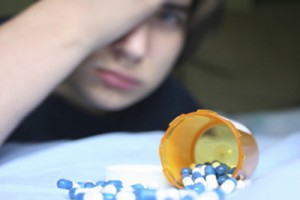By CCHR International
The Mental Health Industry Watchdog
August 13, 2019
The spate of recent mass shootings has prompted the mental health watchdog, Citizens Commission on Human Rights International (CCHR) to reiterate the urgent need for State and a Federal government investigation into the irrefutable link between psychotropic drugs and violence. The group is making its report, “Psychiatric Drugs Create Violence and Suicide,” available to legislators which cites 16 studies that show psychotropic drugs create homicidal and suicidal reactions. CCHR has documented at least 78 acts of senseless violence committed over several decades by those taking or withdrawing from psychiatric drugs, leaving a wake of 464 deaths and 926 wounded.
The report cites 27 drug regulatory agency warnings that indicate psychotropic drug adverse effects that include mania, psychosis, hostility, aggression or homicidal ideation and nearly 50 warn of self-harm or suicide/suicidal ideation.[1]
Between the three current shooters, 34 people were killed and 63 wounded or injured. Police found sedative hypnotic pills in one shooter’s room in another person’s name, questioning whether he was abusing them. Another shooter was a psychology student who once described himself as having several mental disorders and spoke of his “medication.” Click here for further details on these three shootings.
Another shooter’s father is a licensed mental health counselor who once evaluated persons being admitted to a psychiatric facility on whether they were a “danger to themselves or others.” CCHR says this also raises questions about the abject failure of mental health screenings generally as a means of detecting or preventing violent behavior. These behavioral screenings often lead to prescriptions of psychotropic drugs that cause the violent or suicidal behavior they’re supposed to prevent, CCHR says.
Patrick D. Hahn, an affiliate professor of Biology at Loyola University Maryland, warned: “The link between antidepressants and violence, including suicide and homicide, is well established.”[2]

In 2017, IQVia’s statistics recorded more than 2.1 million 0-17-year olds prescribed antidepressants despite an FDA Black Box warning that they may cause suicide. Of these, 38,534 were aged 0-5 and 574,090 were 6-12 years old.
There are millions of children and adolescents also at risk of this. In 2017, IQVia’s statistics recorded more than 2.1 million 0-17-year olds prescribed antidepressants despite an FDA Black Box warning that they may cause suicide. Of these, 38,534 were aged 0-5 and 574,090 were 6-12 years old.[3]
A leading U.S. law firm that has examined the role of prescription drug-induced violence, reported on its website that “a large body of research has shown that psychiatric drugs can make people manic, psychotic, aggressive, suicidal, and homicidal. These are proven drug reactions, not symptoms of a mental illness. Unlike symptoms of a disorder, these reactions often disappear when the drug is withdrawn, or the dose lowered, and reappear when the drug is resumed.”[4]
Many mass shooters were taking or withdrawing from psychiatric drugs. “Post-withdrawal symptoms from antidepressants may last several months to years and include disturbed mood, emotional lability (excessive emotional reactions and frequent mood changes) and irritability. Benzodiazepine withdrawal symptoms include perceptual distortions, depersonalization, paranoid thoughts, rage and aggression,” the law firm’s site points out.
The recent Texas averted killer, aged 19 and possibly taking antidepressants, was planning to have police kill him during his planned violent assault—known as “suicide by cop.” A study from the Nordic Cochrane Centre and the University of Copenhagen published in the British Medical Journal concluded that “children and young people are more likely to think about or attempt suicide while taking antidepressants.”[5] In 2018, researchers established that in the past ten years, “antidepressant rates are associated with increased suicide rates.”[6]
Florida lawmakers gave more than $69 million to school districts for mental health following the Marjory Stoneman Douglas shooting.[7] But Diane Stein, the President of CCHR Florida states, “Funds apparently were not used to investigate whether psychiatric drugs and/or failed behavioral treatments played a role in that shooting in order to prevent others. Yet the person charged over the massacre had a long history of mental health assessments and treatment.”
David Kirschner, Ph.D., a New York forensic psychologist who has evaluated 30 teenage and young adult murderers, found that most had “been in ‘treatment’ and were using prescribed stimulant/amphetamine type drugs before and during the killing events. These medications did not prevent but instead contributed to the violence….”[8]
Jan Eastgate, President of CCHR International and Stein want to see Congressional and State investigations into psychiatric drug links to violence and accountability for the billions of dollars being given to prevent and address violence, which likely are exacerbating the situation. They point to the Final Report of the Federal Commission on School Safety released in December 2018 which did not review evidence of psychotropic drug-induced violence and suicide. Rather, the report prompted the Health and Human Services Secretary to advise the White House: “We’ve got to get kids on psychosocial and psychotropic medications to treat them.” The secretary is a past president of the manufacturer of an antidepressant linked to five high profile killings during his tenure with the company and which left 21 dead and 30 wounded. Three of the killers were aged 12, 16 and 20 and two committed suicide.[9]
Eastgate adds, “The widespread use of psychotropic drugs is not only harming individuals but also our communities with increased suicides and acts of violence. There should be accountability and penalties for manufacturers and prescribers of these dangerous chemicals when they result in damage, addiction, suicide and violent acts. Drug regulatory agencies should withdraw psychotropic drugs from the market that endanger lives.”
CCHR recommends people read its online report and report any incidents of adverse effects from psychiatric drugs or treatment here.
References:
[1] https://www.cchrint.org/school-shooters/.
[2] Patrick D. Hahn, “Antidepressants: a deadly treatment?” Baltimore Sun, 11 Apr. 2015, http://www.baltimoresun.com/news/opinion/bs-ed-antidepressants-violence-20150411-story.html.
[3] https://www.cchrint.org/psychiatric-drugs/children-on-psychiatric-drugs/.
[4] https://www.baumhedlundlaw.com/medication-induced-violence/?fbclid=IwAR3VryvhD9I0B4g_d66L_XYiEU72Ybkg5ZKD3i4ahs6L7i3oF6H2tpHQ8sQ.
[5] “Antidepressants linked to suicide and aggression in teens,” NHS (UK), 28 Jan. 2016, https://www.nhs.uk/news/mental-health/antidepressants-linked-to-suicide-and-aggression-in-teens/.
[6] Martin Plöderl, PhD & Michael P. Hengartner, Ph.D., “Suicides Are Increasing – And So Are Antidepressant Prescriptions,” MAD, 23 Aug. 2018, https://www.madinamerica.com/2018/08/suicides-are-increasing-and-so-are-antidepressant-prescriptions/.
[7] “Florida spent $69M on mental health after Parkland but didn’t mention suicide prevention,” Tampa Bay Times, 27 Mar. 2019, https://www.tampabay.com/florida-politics/2019/03/27/florida-spent-69m-on-mental-health-after-parkland-but-almost-nothing-for-suicide-prevention-ptsd/.
[8] “Mass Murderers and Psychiatric Drugs,” Behaviorism and Mental Health, 22 Sept. 2014, http://behaviorismandmentalhealth.com/2014/09/22/mass-murderers-and-psychiatric-drugs/.
[9] https://www.cchrint.org/pdfs/violence-report.pdf Between 2007 and 2017, Arcan Cetin (20), Jose Reyes (12); Jeff Weise (16); Steven Kazmierczak (27). The case that first questioned the role of Prozac in violence was Joseph Wesbecker in 1989, who killed 8 and wounded 12 in Kentucky.


